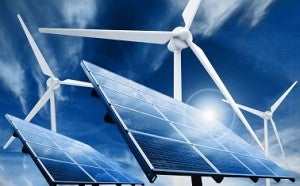Why 2015 is the Year for Clean Energy in the U.S. and China
 With a new year comes new promises and new opportunities – and that also goes for the United States and China, the world’s biggest climate polluters.
With a new year comes new promises and new opportunities – and that also goes for the United States and China, the world’s biggest climate polluters.
The good news is both nations appear ready to embrace solar and other renewables, investments that will cement their recent, bilateral agreement to tackle climate change.
Here are five signs renewables will finally gain traction in China and the U.S. in 2015 and continue to grow in coming years:
- China’s solar investments are not slowing down.
Even in the very near-term, China is poised for dramatic solar adoption. The country was rushing to build 10 gigawatts of solar photovoltaic projects in the fourth quarter of 2014 alone, enough to power more than 7.5 million homes.
And 2015 shows no signs of slowing down, as China and other solar energy markets across the world are expected to continue to gain ground.
- Cost of solar panels in China is plummeting.
It’s easy to understand why solar is on the rise.
For years now, Chinese photovoltaic module costs have steadily declined. Five of China’s largest module makers, which made up 27 percent of all 2013 shipments, reported a14-percent drop in production cost that year.
What’s more, solar panel cost reductions aren’t going to stop any time soon. By 2020, multi-crystalline silicon modules, a common and inexpensive solar panel type, are projected to drop 30 percent.
- Materials are in ample supply.
You can’t make solar panels out of any old scraps of metal you find floating around. Fortunately the materials needed are readily available.
By the end of 2014, manufacturers were expected to produce 288,000 tons of polysilicon, a raw material that’s a central component of solar panel production.
- Utilities are already greening their fleets.
Don’t think the U.S. is missing out on the clean energy boom.
Forty-five percent of all new electric generating capacity installed during the first three quarters of 2014 came from renewable sources.
A confluence of factors – the cost of renewable energy sources plummeting, the retirement of outdated coal plants, and the natural gas boom – illustrate that the country’s power sector is ripe for a transition. By 2030, one-quarter of U.S. fossil-fuel plants are expected to close.
It means we’ll switch to a cleaner energy portfolio that will drastically reduce our greenhouse gas emissions over the next 15 years.
- Renewable energy is cost-competitive.
Without even considering the massive reduction in greenhouse gases that renewable energy sources provide, adoption of clean energy resources is becoming a simple matter of dollars and cents. Wind and solar are going to cost less; wholesale, traditional power prices are going to go up.
A recent study found that by building on the progress we’ve made so far, the United States can get 23 percent of its energy from clean sources by 2030 by investing “just a fraction” above business as usual.
The outlook for China is just as good.
On the right track
We have a long way to go before China and the U.S. commit to the deep greenhouse gas reductions we need to avoid the worst outcomes of climate change. But make no mistake: There are signs of real progress in both countries.
Photo source: Flickr/Solar Wind Technology
This post originally appeared on our EDF Voices blog.











